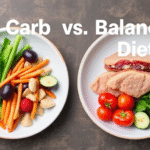Can Cardio Alone Help You Lose Fat? Understanding the Role of Cardio in Weight Loss
When considering weight loss, many people turn to cardio exercises, believing that these activities can help them shed fat effectively. But can cardio alone help you lose fat? To answer this question, it’s essential to dive into what science says about cardio’s role in weight loss and fat loss specifically.
Cardio, short for cardiovascular exercise, includes activities like running, cycling, swimming, or even brisk walking. The primary goal of cardio is to elevate the heart rate, enabling the body to burn calories. However, whether these calories translate to fat loss depends on several factors, including your overall lifestyle and dietary habits.
The Science Behind Cardio and Fat Loss
Research indicates that cardio exercises do indeed result in calorie expenditure, which is a critical component of fat loss. When you burn more calories than you consume, your body turns to its fat stores for energy. This process can lead to weight loss over time. Nonetheless, relying solely on cardio may not be as effective as combining it with other forms of exercise.
Benefits of Cardio
- Calorie Burn: Cardio workouts can help you burn significant calories in a relatively short amount of time.
- Heart Health: Cardio improves cardiovascular fitness, promoting better heart health.
- Endurance: Regular cardio can enhance overall stamina, making daily activities easier.
- Mood Booster: Engaging in cardio can lead to the release of endorphins, improving your mental health.
The Limitations of Cardio Alone
While cardio has its benefits, it is not a standalone solution for fat loss. Studies have shown that individuals who focus solely on cardio may experience a plateau in their weight loss efforts. This can happen for a few reasons:
- Muscle Loss: Prolonged cardio without strength training can lead to muscle loss, which can lower your metabolism.
- Adaptation: Your body adapts to the same workout routines, making them less effective over time.
- Mindless Eating: Some individuals may compensate for calorie burns with increased food intake, negating the benefits of their workout.
To illustrate, a study conducted by the National Institutes of Health indicated that people who combined cardio with strength training experienced greater fat loss than those who only did cardio.
What Does This Mean for You?
If your primary goal is to lose fat, consider a comprehensive approach that includes:
- Cardio exercises (at least 150 minutes per week).
- Strength training (2-3 times per week).
- A balanced diet rich in whole foods, including proteins, healthy fats, and vegetables.
The interplay of these factors is crucial. By integrating strength training into your routine, you not only enhance muscle tone but also boost your resting metabolic rate—your body burns more calories at rest when you have more muscle mass.
Tracking Your Progress
Tracking your exercise and dietary habits can provide valuable insights into what works for your body. Here are some tips:
- Use a fitness tracker: Monitor your daily steps and calorie burns.
- Keep a food journal: Record what you eat to identify potential areas for improvement.
- Weigh yourself regularly: Keeping track of your weight can help motivate you, but remember that muscle gain may impact scale readings.
Final Thoughts
Understanding the role of cardio in fat loss is critical. While cardio can significantly aid in burning calories, it’s most effective when paired with strength training and a healthy diet.
To learn more about effective strategies for weight loss and the role of exercise, check resources from trusted sites like Verywell Fit or WebMD. Remember, achieving your fat loss goals is a journey that involves a commitment to a balanced and healthy lifestyle.
The Science Behind Fat Loss: How Cardio Impacts Your Body
When it comes to fat loss, many people gravitate towards cardio exercises, believing they are the ultimate solution to shedding unwanted pounds. But how effective is cardio on its own? Let’s dive into the science behind how cardio impacts your body and fat loss.
Understanding Cardio and Fat Loss
Cardio, short for cardiovascular exercise, refers to any exercise that raises your heart rate. Activities such as running, cycling, swimming, and dancing are prime examples. These exercises are known to burn calories, and burning calories is crucial for fat loss. However, the relationship between cardio and fat loss is more complex than simply logging miles or minutes on the treadmill.
Caloric Deficit: The Key to Fat Loss
To lose fat, your body needs to be in a caloric deficit, meaning you consume fewer calories than you burn. Cardio plays a significant role in this process. The more intense the cardio, the more calories you burn during the session. However, it’s essential to understand that diet plays an equally critical role in achieving this deficit.
Types of Cardio Exercises
- Steady-State Cardio: This includes low to moderate-intensity exercises performed for an extended period, such as jogging or cycling at a consistent pace.
- High-Intensity Interval Training (HIIT): This method alternates between intense bursts of activity and short rest periods, which can lead to significant calorie burns in a shorter time frame.
- Low-Intensity Steady State (LISS): Activities like walking or light cycling that maintain a lower heart rate over longer durations.
How Cardio Affects Your Metabolism
Cardio can influence your metabolism, which is vital for weight loss. After a cardio workout, your body continues to use energy to repair muscles and replenish oxygen levels. This phenomenon is called “excess post-exercise oxygen consumption” (EPOC), or the “afterburn effect.” The intensity of the cardio workout largely determines the magnitude of the EPOC.
Impact of Cardiovascular Exercise on Body Composition
When it comes to changes in body composition, cardio impacts not just overall weight but also fat distribution and muscle preservation. Regular cardio can help maintain muscle while promoting fat loss, especially when combined with strength training. Strength training is crucial because while cardio burns calories, it does not build muscle mass. strength workouts can create a balanced fitness regimen, allowing your body to utilize energy more efficiently.
Benefits of Combining Cardio and Strength Training
- Improved Muscle Tone: Strength training helps keep muscles intact while losing fat.
- Enhanced Metabolic Rate: Muscle burns more calories, which can increase your resting metabolic rate.
- Balanced Nutritional Needs: A combination of training styles means more robust dietary requirements that encourage healthy eating habits.
Are There Limits to Cardio for Fat Loss?
While cardio has its benefits, relying solely on it for fat loss can lead to several issues:
- Plateaus: The body can adapt to regular cardio, reducing calorie burn efficiency.
- Muscle Loss: Excessive cardio without strength training can lead to muscle loss, slowing metabolism.
- Fatigue and Overtraining: Over-reliance on cardio can lead to burnout, increasing the risk of injury and decreasing motivation.
Cardio is undeniably a valuable tool in your weight loss toolkit, but it is not a standalone solution. To optimize fat loss, combine cardio with strength training and maintain a balanced diet. Listen to your body and adjust your regimen as needed. For further reading and resources on how cardio impacts your body, visit NCBI for scientific studies or explore Healthline for detailed insights on effective weight-loss strategies.
Comparing Cardio vs. Strength Training: Which is More Effective for Fat Loss?
When it comes to shedding those extra pounds, you might wonder which exercise regimen is more effective: cardio or strength training? Both have their advantages, but understanding how each impacts fat loss can help you make a more informed decision.
Cardiovascular exercise, often referred to as cardio, includes activities like running, cycling, and swimming. These exercises elevate your heart rate, leading to increased calorie burn, which is essential for fat loss. Strength training, on the other hand, focuses on building muscle through resistance. This often involves using weights, resistance bands, or your body weight to create a challenging workout.
Now let’s break down both approaches to see which is better suited for you in your fat loss journey.
Cardio: Burning Calories Effectively
Cardio is usually fast-paced and helps you burn more calories in a shorter time compared to strength training. Here are some benefits of incorporating cardio into your routine:
- Immediate calorie burn: Cardio sessions can lead to a higher calorie deficit, crucial for weight loss.
- Improved heart health: Activities that elevate your heart rate can improve cardiovascular health.
- Accessibility: Many cardio exercises require minimal equipment, making them easy to integrate into your life.
However, it’s essential to note that relying solely on cardio may not be the best strategy for long-term fat loss. Research suggests a blended approach works best. Studies show that while you can lose weight with cardio alone, incorporating strength training can boost your metabolic rate, leading to greater overall fat loss.
Strength Training: Building Muscle and Burning Fat
Strength training builds muscle, and more muscle mass means a higher resting metabolic rate. When your metabolism is higher, you burn more calories, even at rest. Here are some key points about strength training:
- Muscle maintenance: Maintaining muscle mass is crucial during weight loss to prevent the body from losing both fat and muscle.
- Sustained calorie burn: Strength training can create an afterburn effect, where you continue to burn calories after your workout is complete.
- Improved strength: This type of training not only improves physical appearance but also boosts overall body strength and endurance.
While strength training is excellent for long-term fat loss, it may not lead to immediate weight loss as quickly as cardio. It’s usually about finding balance.
Combining Cardio and Strength Training
For effective fat loss, consider combining both cardio and strength training in your fitness program. Here are some strategies:
- Alternate days: Rotate between cardio days and strength training days for a well-rounded approach.
- High-Intensity Interval Training (HIIT): Incorporate HIIT workouts that blend cardio and strength for maximized fat loss.
- Prioritize muscle: Make sure to allocate enough time for strength training, focusing on all major muscle groups.
The key to success lies in consistency. Find a routine that works for you, keep track of your progress, and adjust as needed. You might also want to consider speaking with a fitness professional for personalized advice.
A Quick Comparison Table
| Aspect | Cardio | Strength Training |
|---|---|---|
| Immediate Calorie Burn | High | Moderate |
| Afterburn Effect | Low | High |
| Muscle Maintenance | Low | High |
| Ease of Integration | High | Moderate |
Before starting any fitness program, it’s always wise to check with your doctor or a certified trainer. Monitoring your diet is also crucial. A well-balanced diet rich in whole foods—with a mix of proteins, carbohydrates, and healthy fats—is vital for effective fat loss. For further insights on diet and workout routines, you can visit Healthline and Mayo Clinic.
Both cardio and strength training have their unique benefits, and the most effective fat loss strategy typically involves a combination of both. By understanding the strengths of each, you can tailor your approach to fit your personal goals and lifestyle.
The Importance of Nutrition in Conjunction with Cardio for Effective Weight Loss
When it comes to losing weight, many often wonder about the effectiveness of cardio alone. While cardio workouts can play a significant role in burning calories and promoting fat loss, nutrition is equally important. Understanding how these two components work together is crucial for achieving effective weight loss.
Cardio exercises, such as running, cycling, and swimming, help elevate your heart rate and burn calories during and after your workout. However, without proper nutrition, you may be limiting your fat loss potential. Here’s why nutrition should be your partner in cardio for weight loss:
The Role of Nutrition
Your body requires a balanced intake of nutrients to facilitate fat loss. Here are the main nutritional elements to consider:
- Proteins: Eating enough protein helps preserve muscle mass while losing fat. It’s essential to incorporate lean meats, fish, eggs, legumes, and dairy into your diet.
- Carbohydrates: Carbs provide the energy needed for cardio workouts. Opt for whole grains, fruits, and vegetables for a steady energy release.
- Fats: Healthy fats like avocados, nuts, and olive oil can help with hormone regulation and fullness. Remember to consume them in moderation.
- Vitamins and Minerals: Micronutrients support various bodily functions, including metabolism and muscle recovery. Focus on a colorful diet rich in fruits and vegetables.
Research shows that pairing a balanced diet with a regular cardio routine can lead to more sustainable weight loss. A survey from the National Institutes of Health indicated that only combining exercise and nutritional strategies leads to greater fat loss and improved health outcomes.
How Many Calories Should You Consume?
To lose weight, you need to create a calorie deficit, meaning you consume fewer calories than you burn. It’s helpful to track your daily caloric intake using apps or food journals. The general rules of thumb for women and men are:
| Gender | Daily Calorie Intake |
|---|---|
| Women | 1,200 – 1,500 calories |
| Men | 1,500 – 1,800 calories |
It’s vital to customize these numbers based on your activity level and age. A Calculate your caloric needs tool can provide personalized guidance.
Timing Your Nutritional Intake
When you eat can also impact your weight loss success. Consider the following strategies:
- Pre-Workout Nutrition: Consuming a small meal rich in complex carbohydrates and proteins 30-60 minutes before your workout can enhance your performance.
- Post-Workout Nutrition: Refueling your body with proteins and carbs post-workout aids recovery and promotes muscle rebuilding.
Healthy snacks, like Greek yogurt with berries or a banana with almond butter, can be excellent pre and post-workout choices.
Common Misconceptions
Many people believe that they can solely rely on cardio for weight loss, often disregarding nutrition. Here are some common myths:
- Cardio is Enough: While cardio is effective, without a proper diet, you might not see desired results.
- All Calories are Equal: Quality of food matters. 100 calories of candy won’t provide the same energy as 100 calories of healthy fruits and nuts.
- You Can Outrun a Poor Diet: Exercise cannot compensate for an unhealthy diet; the two must work hand in hand.
Combining proper nutrition with a consistent cardio routine enhances your fat loss results. To deepen your understanding of the subject, consider exploring resources like the American College of Sports Medicine or the U.S. Department of Agriculture Nutrition site for more insights into effective weight loss strategies. Remember, successful weight management is a balance of effective workouts and a well-planned diet.
Common Myths About Cardio and Fat Loss: What the Research Really Says
When it comes to fat loss, many people turn to cardio workouts as a go-to solution. However, several myths persist about what cardio can really do for your waistline. Let’s explore these myths and what research says about the relationship between cardio and fat loss.
Myth 1: Cardio Is the Only Way to Lose Fat
Many believe that cardio exercises are the sole path to shedding unwanted fat. However, research indicates that while cardio can support fat loss, it is not the only effective approach. Weight training, for example, can significantly contribute to fat loss by building muscle. Muscles burn more calories at rest compared to fat, thus increasing your overall calorie expenditure.
Myth 2: More Cardio Equals More Fat Loss
Another common belief is that the more cardio you do, the more fat you will lose. While it seems logical, studies suggest that excessive cardio can sometimes lead to burnout or muscle loss. In fact, a balanced workout routine that includes strength training along with moderate cardio is often more effective for long-term fat loss.
Myth 3: You Must Do Cardio for Hours to See Results
People often think they need to spend hours on the treadmill or elliptical to lose fat. However, research shows that shorter, high-intensity workouts can lead to effective fat loss. High-Intensity Interval Training (HIIT) is a prime example. This technique alternates short bursts of intense activity with rest, making workouts shorter without sacrificing results.
Myth 4: Cardio Burns Fat While You’re Doing It, and That’s It
Another misconception is that fat loss only occurs during the cardio session itself. While it’s true that cardio burns calories during exercise, the post-exercise effect is often overlooked. After intense cardio or weightlifting, your body continues to burn calories as it recovers. This phenomenon is known as excess post-exercise oxygen consumption (EPOC), which can help with ongoing fat loss.
Myth 5: Cardio Is Effective Without a Proper Diet
One of the biggest myths is that you can out-exercise a poor diet. However, science consistently shows that nutrition plays a crucial role in fat loss. Engaging in cardio without addressing your dietary habits may lead to minimal results. Focus on a balanced diet rich in whole foods, lean proteins, and healthy fats to support your fitness efforts.
The Science of Cardio and Fat Loss
What does the science really say about cardio and fat loss? Here’s a breakdown of key findings:
| Study | Findings |
|---|---|
| Study 1 | Participants who combined cardio and strength training saw greater fat loss compared to those who only did cardio. |
| Study 2 | HIIT was shown to be more effective in burning fat than steady-state cardio. |
| Study 3 | A diet high in protein helped enhance fat loss during a cardio-intensive program. |
Cardio Frequency and Duration
It’s also important to consider how often and how long you should engage in cardio. The American Heart Association recommends at least 150 minutes of moderate aerobic activity per week. This can be broken down into manageable sessions, such as:
- 30 minutes, five times a week
- 15 minutes, ten times a week
Ultimately, the best approach is to find what works for you. Mixing cardio with strength training and maintaining a balanced diet will likely give you the best results.
By busting these common myths about cardio and fat loss, you can create a more effective plan for your fitness journey. Remember, it’s not just about the quantity of cardio workouts, but how you integrate them into a balanced routine that includes strength training and proper nutrition. Stay educated, stay motivated, and keep moving toward your fat loss goals.
For more information on fitness and fat loss strategies, check sources like NIH, PubMed Central, or ACE Fitness.
Effective Cardio Workouts: Types and Their Benefits for Fat Loss
When it comes to shedding those extra pounds, incorporating effective cardio workouts into your routine can be a game changer. Not only do these workouts boost your heart health, but they also play a vital role in fat loss. Understanding the different types of cardio and their benefits can help you choose the right approach to achieve your weight loss goals.
Types of Cardio Workouts
Different cardio workouts vary in intensity and duration. Here are some popular types you might consider:
- Steady-State Cardio: This involves maintaining a consistent level of intensity throughout the workout. Activities like jogging, swimming, or cycling at a steady pace fall into this category.
- High-Intensity Interval Training (HIIT): HIIT alternates short bursts of intense activity with periods of rest or lower-intensity exercise. This type of workout is highly effective for fat loss due to its ability to increase calorie burn post-exercise.
- Circuit Training: This combines cardio and strength exercises. Moving quickly between exercises keeps your heart rate elevated while also building muscle.
- Walking: A low-impact option, walking can be effective for fat loss, especially for beginners or those with joint issues. A brisk walk can help you burn calories without straining your body.
Benefits of Cardio Workouts for Fat Loss
Cardio workouts come with a multitude of benefits that can enhance your fat loss journey:
- Calorie Burning: The primary reason for incorporating cardio is to burn calories. The more intense the exercise, the more calories you burn. This directly contributes to your caloric deficit, crucial for fat loss.
- Increased Metabolic Rate: Cardio can help to increase your resting metabolic rate. This means you burn more calories even while at rest. consistent cardio sessions can help elevate this rate significantly.
- Fat Oxidation: Cardio workouts help your body utilize fat as an energy source, especially during lower-intensity exercises, where the body predominantly uses fat for fuel.
- Mood Enhancement: Cardio releases endorphins, the body’s natural feel-good hormones. This can help reduce stress and improve your mood, making it easier to stay committed to your fat loss goals.
- Improved Cardiovascular Health: Cardio workouts strengthen your heart and lungs, increasing overall health. A strong cardiovascular system is key for supporting longer, more intense workouts.
Cardio into Your Routine
To reap the benefits of cardio effectively, it’s essential to find a balance. Here’s how to integrate it into your fitness program:
- Frequency: Aim for at least 150 minutes of moderate-intensity cardio each week. This can be broken into smaller sessions, such as 30 minutes a day, five times a week.
- Variety: Mix different types of cardio to keep your routine exciting. Try blending steady-state cardio with HIIT sessions for optimal results.
- Listen to Your Body: Ensure you allow time for recovery. Overtraining can lead to burnout and injury, which can derail your progress.
The effectiveness of cardio in fat loss can be influenced by various factors, including your diet and overall lifestyle. It’s essential to pair cardio workouts with a balanced diet to maximize your results. To gain deeper insights, consider visiting ACE Fitness for guidance on choosing the right type of cardio.
Tips for Maximizing Your Cardio Efforts
To ensure you’re getting the most out of your cardio workouts, keep the following tips in mind:
| Tip | Advice |
|---|---|
| Set Goals | Define clear, achievable goals to stay motivated. |
| Track Progress | Use apps or a fitness journal to monitor your workouts and improvements. |
| Stay Hydrated | Drink plenty of water before, during, and after your workout to keep your body functioning optimally. |
| Find a Partner | Working out with a friend can make cardio more enjoyable and keeps you accountable. |
Effective cardio workouts can significantly impact your journey toward fat loss. Always remember that consistency is key, and finding activities you enjoy will help you stay committed. For more resources on cardio workouts and weight loss strategies, visit Runner’s World.
Embarking on your fat loss journey doesn’t have to be complicated. With the right cardio workouts in your toolkit, you can take significant strides toward achieving your goals.
Personalizing Your Cardio Routine: How to Maximize Fat Loss Results
When it comes to losing fat, a one-size-fits-all approach just won’t cut it. Each person’s body and lifestyle are unique, which is why personalizing your cardio routine can lead to better results. Too often, people jump into a standard cardio regimen, expecting miraculous results. However, understanding how to tailor your approach can make all the difference in your fat loss journey.
Understanding Different Types of Cardio
Before you can personalize your cardio routine, it’s vital to know the types of cardio available. Here are some options:
- Steady-State Cardio: This involves maintaining a consistent pace for the entire session, like jogging or cycling at a steady speed.
- Interval Training: Alternating between high-intensity bursts of activity and low-intensity recovery periods. This can boost your metabolism significantly.
- Low-Intensity Steady State (LISS): Activities such as brisk walking or light cycling that you can sustain for longer periods. These are great for burning fat without excessive strain on your body.
- High-Intensity Interval Training (HIIT): Short, intense bursts of exercise that push your limits, followed by brief rest periods.
Choosing the right type of cardio for your routine largely depends on your fitness level and preferences. Take the time to experiment with these kinds to see which ones you enjoy and what feels best for your body.
Setting Clear Fat Loss Goals
To maximize your results, think about what you want to achieve. Are you looking to lose a specific number of pounds, trim down your waistline, or build endurance? Setting clear and measurable goals will help you stay focused and motivated.
Here are some examples of specific goals:
- Lose 1-2 pounds per week for the next month.
- Decrease your mile time by 30 seconds in the next two months.
- Incorporate cardio into your routine 4-5 days a week.
Having defined goals will keep you accountable and provide a roadmap for your cardio routine.
Listening to Your Body
Pay attention to how your body responds to different intensities and durations of cardio. If you’re feeling fatigued or sore, it’s essential to allow time for recovery. This is when your body rebuilds and strengthens, ultimately leading to fat loss.
This is even more crucial when you are incorporating a mixed routine of both steady-state and interval training. Balancing intense sessions with moderate, easy days will support long-term commitment and health.
Creating a Balanced Routine
A well-rounded routine should include more than just cardio. Strength training plays a critical role in fat loss, too. Building muscle helps increase your resting metabolic rate, which means you burn more calories even when you’re not working out. Here’s how to structure a balanced weekly routine:
| Day | Activity | Duration |
|---|---|---|
| Monday | HIIT | 30-45 minutes |
| Tuesday | Strength Training | 30-60 minutes |
| Wednesday | Steady-State Cardio | 30 minutes |
| Thursday | Rest Day | – |
| Friday | Interval Training | 30-45 minutes |
| Saturday | Strength Training | 30-60 minutes |
| Sunday | Active Recovery (e.g., walking) | 45-60 minutes |
By integrating different cardio styles with strength training and proper rest, you can create a personalized approach that enhances your fat loss journey.
Seek Professional Guidance
If you’re unsure where to start or how to tailor your program, consider consulting with a fitness professional. They can help you develop a tailored plan that suits your individual needs, abilities, and goals. For more tips and information on personalizing your workout, check out ACE Fitness or IHRSA.
Remember, personalizing your cardio routine is a journey, not a race. Listen to your body, adjust as needed, and most importantly, enjoy the process of getting fit and healthy!
Key Takeaway:
Key Takeaway: Understanding the Comprehensive Approach to Fat Loss with Cardio
When it comes to the question, "Can cardio alone help you lose fat?" the answer is more complex than a simple yes or no. While cardio exercises, such as running, cycling, or swimming, play a vital role in promoting fat loss, relying solely on cardio may not yield the most effective or sustainable results. Understanding how cardio impacts your body can provide a clearer picture of its role in your weight loss journey.
Cardio is undoubtedly beneficial for burning calories and improving cardiovascular health, which can contribute to weight loss. The science behind fat loss shows that engaging in regular cardio can help create a caloric deficit—the key component of losing weight. However, strength training has emerged as an equally important player in the fat loss game, as it builds muscle, boosts metabolism, and helps prevent the loss of lean body mass during weight loss. When comparing cardio and strength training, it becomes evident that a well-rounded approach that combines both methods may lead to better outcomes than relying on one over the other.
Nutrition also plays a critical role in achieving successful fat loss. Even with a well-structured cardio routine, neglecting dietary habits can hinder your progress. nutritious foods that support your fitness goals while being mindful of caloric intake is essential for an effective weight loss strategy.
Moreover, debunking common myths about cardio can shed light on its true efficacy. Understanding what research supports and challenges can help you navigate your fitness journey more effectively. By focusing on effective and varied cardio workouts, such as HIIT (High-Intensity Interval Training) or steady-state cardio, you can enhance your fat loss efforts.
Personalization is key. Tailoring your cardio routine to match your fitness level, preferences, and goals can maximize results. Experimenting with different types of cardio, duration, and frequency allows you to find what works best for your body. The bottom line is that while cardio is an essential tool in the fat loss toolbox, it’s most effective when paired with strength training, proper nutrition, and a personalized approach. Embrace a holistic strategy, and you’ll be well on your way to achieving your weight loss goals.
Conclusion
To truly maximize fat loss, it’s essential to understand that cardio is just one piece of a larger puzzle. While engaging in cardio workouts can significantly impact your body’s ability to burn fat, relying solely on these exercises may not yield the results you desire.
The science demonstrates that cardio can increase your heart rate and boost calorie expenditure, but it’s equally important to recognize the role that strength training plays in fat loss. By incorporating resistance exercises, you enhance muscle mass, which can elevate your resting metabolic rate. This dual approach often proves to be more effective than cardio alone.
Nutrition also plays a crucial role in your weight loss journey. Fueling your body with the right nutrients can amplify the benefits of your cardio workouts. Balancing macronutrients and monitoring caloric intake supports your efforts to shed excess fat.
Furthermore, debunking common myths surrounding cardio can help you set realistic expectations and create a more sustainable routine. Tailoring your cardio workouts to fit your personal goals, preferences, and lifestyle can lead to better adherence and results.
In essence, for effective fat loss, a holistic approach is key. Combine different forms of exercise, such as cardio and strength training, with targeted nutritional strategies. By doing so, you’ll not only enhance your fat-burning capabilities but also foster a healthier, more balanced lifestyle that promotes long-term success.











